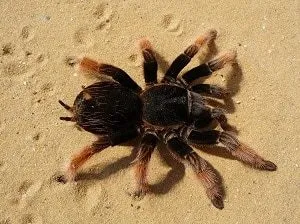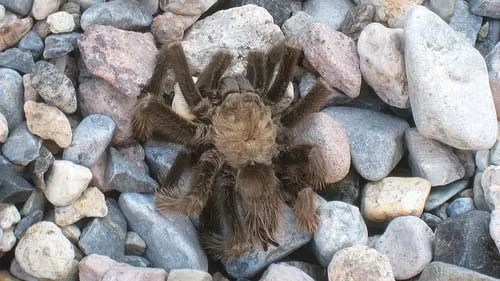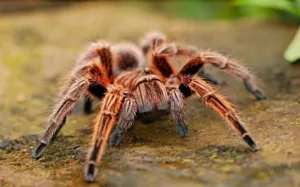Understanding Tarantula Costs
Embarking on the journey of tarantula ownership can be an exciting experience, but it’s essential to understand the financial commitments involved. The cost of a tarantula goes beyond just the initial purchase price; it encompasses the ongoing expenses required to ensure your eight-legged friend thrives. This guide provides a comprehensive overview of the various costs associated with owning a tarantula, helping you make an informed decision before welcoming one into your home. From the price of the tarantula itself to the cost of housing, feeding, and veterinary care, we will break down all the financial aspects you need to consider. Understanding these costs upfront will allow you to budget effectively and provide the best possible care for your tarantula, ensuring a happy and healthy life for your new pet. Preparing for these expenses is key to responsible pet ownership and will help you avoid any unexpected financial burdens down the line.
Factors Influencing Tarantula Prices
Several factors contribute to the price of a tarantula. These elements can significantly affect how much you’ll pay for your new pet. Species is the primary driver of cost, with rarer or more colorful species commanding higher prices. For example, a Cobalt Blue tarantula is typically more expensive than a common Mexican Red Knee tarantula. The tarantula’s age and size also play a role; juveniles are often less expensive than adults. The tarantula’s origin is another important factor, tarantulas bred in captivity are often more expensive, due to the care and resources put into their breeding. The breeder’s reputation and the tarantula’s health condition also affect pricing. Tarantulas from reputable breeders who prioritize health and proper care are generally priced higher. Finally, the current market demand for a particular species can fluctuate prices, making some tarantulas more or less expensive depending on their popularity at the time.
Species and Their Impact on Cost

The species of tarantula is a major determinant of its cost. Some species are relatively common and easy to breed, making them more affordable. Examples include the Mexican Red Knee (Brachypelma hamorii) and the Chilean Rose (Grammostola rosea), which can be found for prices ranging from $20 to $50. On the other hand, rarer or more exotic species can cost significantly more. The Cobalt Blue tarantula (Cyriopagopus lividus) and the Pinktoe tarantula (Avicularia avicularia) may range from $50 to $150 or more, depending on size, age, and availability. Some highly sought-after species or those with striking colors, such as certain Poecilotheria species, can cost several hundred dollars. Before purchasing, research the specific species you are interested in to understand the typical price range. Consider the species’ temperament, care requirements, and lifespan, as these factors may also influence your decision. By doing so, you’ll ensure you are financially prepared for the pet you choose.
Common Tarantula Species and Prices
Let’s look at some common tarantula species and their average prices. The Mexican Red Knee, known for its docile temperament and striking coloration, generally costs between $20 and $50. These tarantulas are popular among beginners because of their relatively low price and ease of care. The Chilean Rose, another beginner-friendly species, is typically priced similarly, also ranging from $20 to $50. Due to their hardy nature and ease of care, both are excellent choices for new tarantula owners. The Pinktoe tarantula can cost between $50 and $80, being a bit more expensive. Finally, the Cobalt Blue tarantula, known for its vibrant blue coloration, can fetch prices from $75 to $150 or more. Keep in mind that these prices are averages and can vary based on the seller, size, and overall market conditions. Always research various sellers and compare prices to ensure you’re getting a fair deal. Checking prices from breeders and pet stores in your area is a great place to start.
Housing and Setup Costs
Housing your tarantula is another important expense, influencing the overall cost of ownership. The size and type of enclosure will depend on the tarantula’s species and size. For smaller species or juveniles, a 5-10 gallon tank or a specialized terrarium may suffice, costing anywhere from $20 to $50. Larger species may require a 10-20 gallon tank or a custom enclosure, which can range from $50 to over $100. Along with the enclosure, you’ll need to furnish it with appropriate substrate, such as coconut fiber or peat moss, which costs around $10-$20 per bag. Additional costs include decorations like hides (cork bark, plastic hides, or natural decorations), which typically cost $5 to $20 each, depending on their size and material. You may also need to invest in a water dish ($5-$10) and a thermometer and hygrometer to monitor the enclosure’s temperature and humidity, which can range from $10 to $30. To ensure the safety of your tarantula, a secure lid is a must-have, costing around $10-$20. These costs, while initial, provide a suitable and safe environment for your tarantula to thrive.
Essential Supplies for Your Tarantula

Beyond the enclosure, you’ll need to purchase several essential supplies to care for your tarantula. These supplies will ensure your pet has everything it needs to thrive. Food is a recurring expense. Tarantulas primarily eat insects such as crickets, mealworms, and roaches, costing around $5-$20 per week. These insects can be purchased live or bred at home to cut down on costs. You’ll also need feeding tongs (about $5-$10) to safely offer food to your tarantula. Regular maintenance supplies are also necessary. You’ll need a spray bottle ($5-$10) to maintain the proper humidity level. You will also need supplies for cleaning and spot-cleaning the enclosure, such as a small scoop and some paper towels, costing roughly $10-$15. Depending on the species, you might need a heat source, such as a heat mat or lamp, which can range from $15 to $50, depending on the type and wattage. Proper ventilation is also important. Ensure that your enclosure has appropriate ventilation to prevent mold growth and ensure good air circulation.
Ongoing Costs of Tarantula Ownership
Owning a tarantula involves ongoing costs that should be considered when creating your budget. These costs are essential to ensure your tarantula’s health and well-being. Food is a recurring expense, with the cost depending on the tarantula’s size, age, and the type of food you choose. Juvenile tarantulas require smaller portions, while larger adults will eat more. Crickets and other feeder insects typically cost between $10 and $30 per month, depending on the quantity and your location. Substrate will need to be replaced regularly, costing approximately $10 to $20 every few months. This helps maintain proper hygiene and prevent the buildup of waste. Depending on where you live and the species, you might also need to use a heat source, which can increase your electricity bill. You should budget for the occasional replacement of supplies, such as water dishes or hides, which can become worn or damaged over time. These ongoing expenses highlight the importance of long-term financial planning when owning a tarantula.
Feeding and Maintenance Expenses
Feeding and maintenance are critical aspects of tarantula care, with associated costs. Feeding costs will depend on the species and age of your tarantula. Young tarantulas should be fed more frequently (2-3 times a week) than adults (once a week or less), influencing how many feeder insects you purchase. The quality of your feeder insects matters. Feeding tarantulas with high-quality, nutritious insects such as gut-loaded crickets or dubia roaches can improve the health of your pet. Expect to spend $5 to $20 or more each month on feeder insects. Maintenance costs involve the replacement of substrate every few months, costing around $10-$20 per change. Spot cleaning the enclosure to remove uneaten food and waste will help to keep it clean. Regular spot cleaning will also prevent the growth of harmful bacteria or molds. These are the routine maintenance aspects that help to keep your tarantula healthy and happy.
Where to Buy a Tarantula and How Much It Costs

The cost of a tarantula can also vary depending on where you choose to purchase one. Tarantulas can be acquired from several sources, each with its own pricing structure. Reputable breeders are often the best source because they specialize in raising tarantulas and can offer healthier specimens. Prices from breeders are usually higher, ranging from $30 to several hundred dollars, depending on the species. Pet stores are another option, but prices can be higher, and the health of the tarantula may not be guaranteed. Pet store prices typically range from $20 to $100 or more, and it is important to examine the tarantula for any signs of illness. Online marketplaces and classified ads can sometimes offer lower prices, but there is a higher risk. You should always verify the seller’s credibility and thoroughly inspect the tarantula. Prices here can vary widely. When comparing prices, consider the tarantula’s size, age, species, and health. Check for any health guarantees or return policies offered by the seller. The location of the seller may also influence the price, with prices potentially being higher in some areas.
Reputable Breeders vs. Pet Stores
Choosing between a reputable breeder and a pet store when purchasing a tarantula can significantly impact your experience. Reputable breeders usually specialize in tarantulas, ensuring a higher standard of care, resulting in healthier animals. They are also more knowledgeable and can offer detailed advice about the care of your new pet. While the initial cost from a breeder may be slightly higher, the investment usually pays off by reducing the risk of health problems down the line. Pet stores often have a wider variety of animals and offer the convenience of one-stop shopping. However, the staff may not be as knowledgeable about tarantulas, and the tarantulas may not have received the same level of care. Pet stores may sometimes prioritize sales over the health of the animals. Before making a purchase, consider the breeder’s reputation and experience, and examine the tarantula for any signs of illness or stress. Checking reviews or asking for recommendations can guide your decision. Although convenience is important, the health and well-being of the tarantula should be your top priority.
Long-Term Costs and Considerations
The cost of owning a tarantula extends beyond the initial purchase. Long-term considerations will help you to keep your pet healthy. As tarantulas grow, their housing requirements may change, requiring larger enclosures. Also, you will need to replace the substrate and decorations. Over the tarantula’s lifespan, which can be several years for some species, this can result in significant costs. Food will be a recurring expense, and prices can fluctuate depending on the source. You should also create a budget for unexpected expenses, such as veterinary care. Consider the possibility of needing to provide additional heating or humidity control, especially depending on where you live. Another factor to consider is whether you travel. You might incur boarding expenses or the need for a pet sitter to care for your tarantula. Before acquiring a tarantula, assess your financial situation and lifestyle. Make sure you are fully prepared for all the costs involved.
Health and Veterinary Care for Tarantulas

While tarantulas are generally low-maintenance pets, it’s important to consider the potential for veterinary care. Veterinary care for tarantulas is not a daily need, but having access to a qualified exotic vet is important. Regular checkups aren’t typically needed, but if your tarantula shows any signs of illness, such as loss of appetite, lethargy, or unusual behavior, you should seek professional advice. The cost of a veterinary visit can vary, but it is a cost to budget for. This may include a consultation fee and any necessary treatments. Preventative measures, such as maintaining proper enclosure hygiene and providing a balanced diet, can help to minimize the risk of illness. If your tarantula does become ill, prompt veterinary intervention is important to improve its chances of recovery. Research local exotic vets before acquiring your tarantula. Be aware that the availability and cost of veterinary care may influence your decision to own a tarantula.
In conclusion, understanding the costs associated with owning a tarantula is essential for any prospective owner. From the initial purchase to the ongoing expenses, careful budgeting is important for the pet’s health. Considering factors such as species, size, and origin, as well as the cost of housing, supplies, and veterinary care, will help you to make an informed decision. By thoroughly researching and planning, you can provide your tarantula with a safe, healthy, and fulfilling life, making it a rewarding experience for both you and your eight-legged friend.
